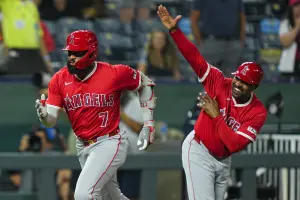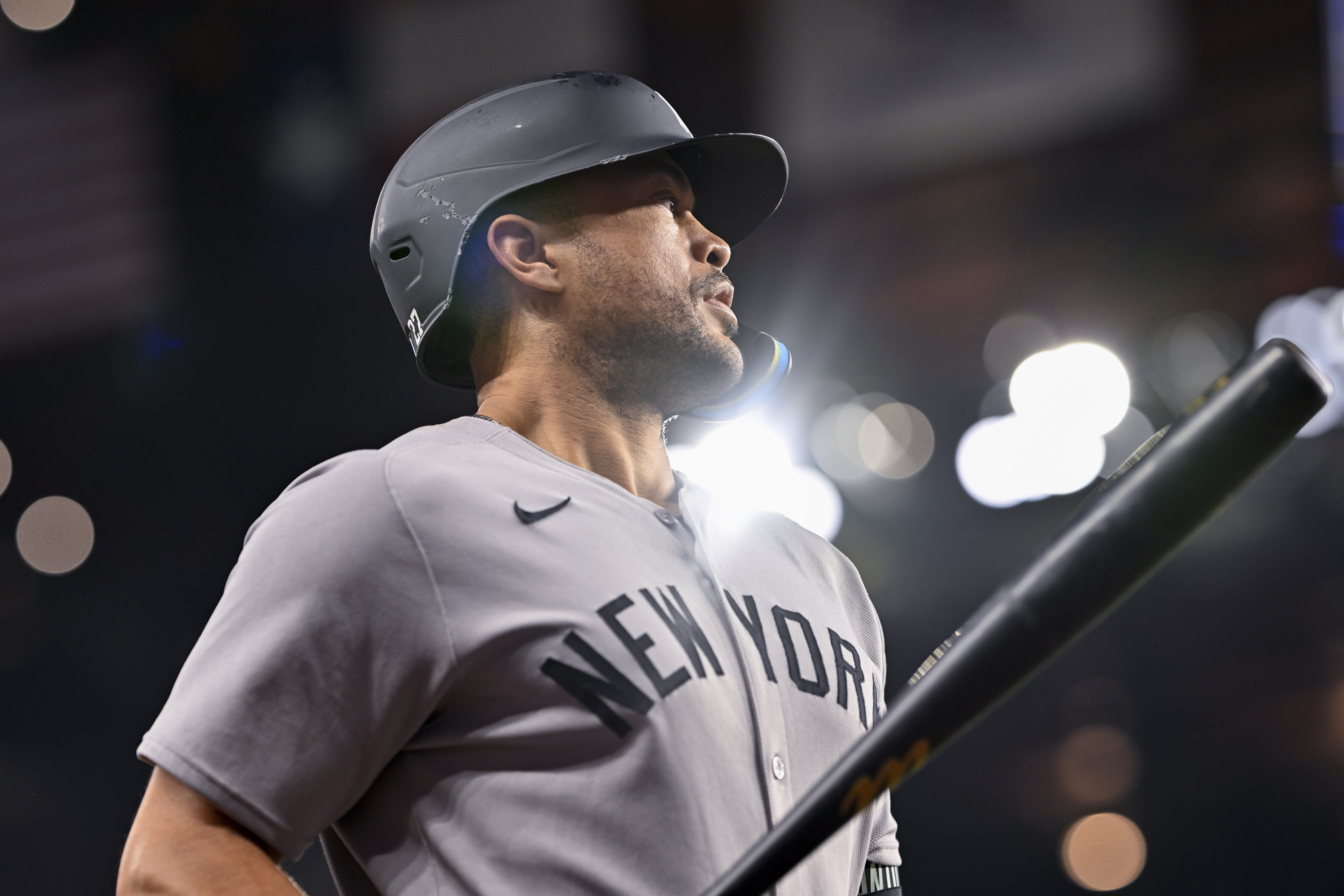
(*) The Confounding Case of Alex Rodriguez
In a forecasting sense, there is no precedent for circa-2015 Alex Rodriguez (3B/DH, NYY). It's still early in the offseason, but everyone's projections for 2015 will soon be available (our on-line version is about two weeks away). With the tools at BaseballHQ.com, here's an in-depth look at how we go about projecting a stat line and roto value for one of the most confounding players of our time.
Any projection has two components: playing time, and performance. In both aspects, there are a number of variables to be evaluated before we can attempt to project Rodriguez. Consider:
Playing time:
- Does he have a firm role entering the season?
- Who is his competition for that playing time?
- Can we expect him to stay healthy and in the lineup?
- How does his contract factor into the playing time picture?
Performance:
- What are the recent trends in his baseline skills?
- How will those skills be affected by his missing most of the past two seasons?
- How should we account for his now-admitted use of PEDs?
To answer these questions as best we can, let's take a department-by-department tour of BaseballHQ.com, addressing each aspect of Rodriguez's outlook along the way.
Playing Time Today (Matt Dodge)
Our initial playing time projection currently stands at:
- 15% 1B
- 5% 3B
-
35% DH
55% Total
With only two months of action in 2013, we really haven't seen much from Rodriguez (on the field, at least) over the past two seasons. Continued injuries in his lower half (strained calf 2010, torn right meniscus 2011, left hip labrum surgery in 2013), make it unwise to count on him returning to any significant AB at the hot corner, where the Yankees are actively pursuing a reunion with free agent Chase Headley. If that pursuit is unsuccessful, Martin Prado's 2B/3B capability provides NYY with some flexibility, which would open up a spring training second base competition between prospects Rob Refsnyder and Jose Pirela.
Most of Rodriguez's future playing time is likely to come at DH, where he should be able to cover left-handed pitching much better than Carlos Beltrán (.564 OPS versus LH pitching in 2014), and could stay in the DH slot if/when Beltran is healthy enough to play RF (only 32 games in 2014). Rodriguez could also gain some playing time at 1B, courtesy of Mark Texiera's "F" Health grade.
Playing Time Tomorrow (Kris Olson)
Chris Young struggled mightily for the Yankees' crosstown rival Mets, ultimately earning his release, but looked like a different player in pinstripes, aided by years' worth of hit-rate misfortune finally turning. Just keep in mind how small (71 AB) that September sample was, and that Young's xPX (87) did not completely buy his resurgence before getting too excited about Young's potential. Still, the Yankees moved quickly to re-sign Young earlier this offseason, and he figures to enter 2015 in the 4th OF role, ready to inherit substantial playing time if Rodriguez or any of the starting OFs falter.
New York's farm system could also conceivably provide some in-house alternatives to Rodriguez. 1B/DH Greg Bird finished 2014 at Double-A, and then acquitted himself well in the Arizona Fall League earlier this offseason. A left-handed hitter, he would at least be a candidate to reduce Rodriguez to a bad-side platoon option.
Another development that could hinder Rodriguez's playing time would be the development of any of the franchise's young catchers. If Gary Sánchez or Austin Romine start the year well offensively and defensively, that could open the door to playing Brian McCann at DH more often.
Facts/Flukes (Ray Murphy/Matt Dodge)
Yr AB R HR RBI SB BA OPS bb% ct% Eye HctX xBA PX/xPX HR/F $5x5 == === === == === == === === === === ==== ==== === ======= ==== ==== 08 510 104 35 103 18 302 965 11 77 0.56 133 296 174/148 22% 32 09 444 78 30 100 14 286 933 15 78 0.82 122 290 145/138 23% 23 10 522 74 30 125 4 270 847 10 81 0.60 121 287 148/139 17% 22 11 373 67 16 62 4 276 823 11 79 0.59 111 261 127/116 15% 13 12 463 74 18 57 13 272 783 10 75 0.44 108 250 103/118 16% 17 13 156 21 7 19 4 244 771 13 72 0.53 134 244 128/166 16% 2 14 ** DID NOT PLAY **
Putting aside the age and the baggage for a moment, and focusing just on skills, this was clearly a player in decline even before he missed 2014:
- First, just soak in the amount of time that has passed since Rodriguez was an elite hitter: His last .300 BA occurred in 2008, his last .400 OBA and .900 OPS in 2009, his last .500 SLG in 2010.
- There was some bounce-back in his small sample 2013 numbers, but before that there were straight-line declines in his power metrics, hard contact, xBA, and OPS.
- In Rodriquez's most recent, near full season (2012, interrupted for 40 days with a broken left hand), he posted a .272/.353/.430 line. Two years older but with a full year of rehabilitation, that may well represent his 2015 ceiling.
Entering his age 39 season with only 156 AB in two years, the aging curve alone seems particularly hard to overcome, even if Rodriguez can stay on the field for a large chunk of 2015. The next steps on these declining skill trends are not going to be pretty. But all of this assumes that a normal aging curve—which under the circumstances, seems like a poor assumption.
Research and Analysis (Andy Andres)
In the effort to project Rodriguez’s batting performance in 2015, we would like to know two things: 1) The exact dates Rodriguez was taking anabolic/androgenic steroids (AAS), and 2) the effect of taking those steroids.
First a look at the impact of AAS on batting performance. In the academic literature, there have been a few attempts at quantifying the impact of AAS on baseball batting performance. In 2007 Roger Tobin of Tufts University modeled the effect of anabolic steroids on home run hitting, and showed that a reasonable 4% increase in bat speed from use of AAS should increase batted ball distance so that there should be significant increase in home runs.
And in 2008 Patrick Kilgo from Emory University estimated there was a statistically significant 12% increase in batting performance as measured in a study of Runs Created in the players named in The Mitchell Report. The simple, conservative take-away from these studies is that if you think a batter may be taking steroids, you might want to estimate a 10% effect—a 10% increase in batting performance if they start taking AAS and a 10% decrease if they stop taking them.
Second, look at the when Rodriguez might have been using AAS. We actually know little about Rodriguez's use of steroids. He has admitted taking them from 2001-03. And since he confessed under oath that he did not use steroids in 2013, but did use them from “late” 2010 and October 2012, it seems safe to say he used them in 2011 and 2012, but most likely did not use them while under intense investigation in 2013. We know nothing about the full extent of his use of AAS for the seasons before 2001 and for the season between 2004 and 2010 (it is not clear what Rodriguez's “late” usage means for 2010). Can we safely assume he was using AAS in these years? If so, which ones? And where can we assume he might not have been using AAS? We can ever answer these questions with any reasonable assurance, but it seems that his sworn testimony is as good as we can get.
So, should we apply a 10% discount to BaseballHQ.com projections for 2015 because we think this year ARod will not be on steroids this year? I would think we do not. Since it is not likely Rodriguez took AAS in 2013 while under intense investigation, I think his 2013 batting performance already has the 10% AAS discount. So if we assume that Rodriguez will not be taking AAS in 2015 (this seems like a very reasonable assumption), his 2013 performance should be weighted slightly higher as we try and project him now.
Speculator (Ray Murphy)
All of the analysis here is based on the assumption that Rodriguez is in fact in the Yankees' plans for 2015, and that he will indeed return to play this season. At least at this point in the offseason, though, that's far from a certainty.
The most compelling reason for his return is, of course, his contract: he is owed $61M over the next three seasons. For most teams, that dollar amount would serve as an unswallowable pill, effectively guaranteeing Rodriguez a roster spot. But the Yankees' resources give them the at-least-theoretical ability to eat that entire contract if it's in their best interest. Of course, that is still an enormous check to write, so they are unlikely to do that lightly. While they may decide that they don't want him back at all, cutting ties with him before he even reports to spring training is probably a stretch.
However, the Yankees' best-case scenario is that Rodriguez is able to return at least some value on their investment. As such, they will spend the spring and probably the early part of the season giving him every opportunity to shake off the rust and demonstrate some productivity.
What if that doesn't happen? The best comparison may be the path taken by the Braves last year in dealing with Dan Uggla: they gave him a full shot in April to try and get his bat going, and when he continued to struggle, they minimized his role and eventually released him in July. The fact that Rodriguez has barely played in two years may earn him a longer period of time to re-establish himself, but the Uggla path seems like a decent template for how the Yankees might approach this.
Conclusion
How do we assimilate all of this information into a projection? As a starting point, our projection engine spits out the following as a default projection, given Rodriguez's age, history, and trends:
AB R HR RBI SB BA OPS R$ === == == === == === === == 372 58 16 59 6 264 799 14
As an over/under, that AB projection seems to have more downside than upside. And if we apply Andres' suggested adjustment to weight 2013 more heavily and not apply a PED "tax" to that line, plus filter out the outlying 13 SB season from 2012, the projection shifts to:
AB R HR RBI SB BA OPS R$ === == == === == === === == 335 58 15 53 2 256 782 10
It's only December, but that seems to incorporate everything we've put on the table.
Alex Rodriguez, $10.
Unlock all of our insights on your way to a fantasy title! A BaseballHQ.com subscription provides complete access through the entire 2015 season.








